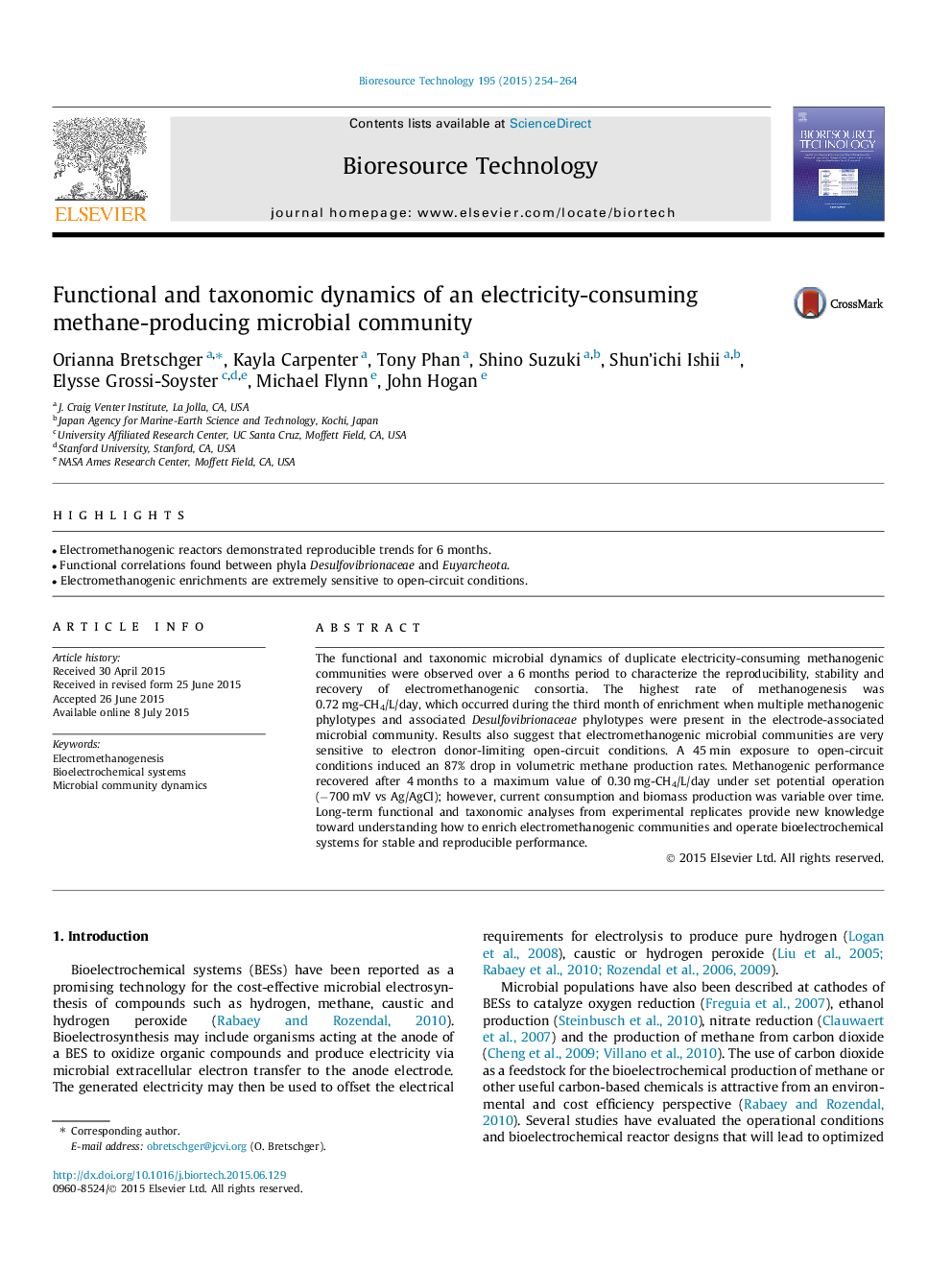| Article ID | Journal | Published Year | Pages | File Type |
|---|---|---|---|---|
| 679537 | Bioresource Technology | 2015 | 11 Pages |
Abstract
The functional and taxonomic microbial dynamics of duplicate electricity-consuming methanogenic communities were observed over a 6Â months period to characterize the reproducibility, stability and recovery of electromethanogenic consortia. The highest rate of methanogenesis was 0.72Â mg-CH4/L/day, which occurred during the third month of enrichment when multiple methanogenic phylotypes and associated Desulfovibrionaceae phylotypes were present in the electrode-associated microbial community. Results also suggest that electromethanogenic microbial communities are very sensitive to electron donor-limiting open-circuit conditions. A 45Â min exposure to open-circuit conditions induced an 87% drop in volumetric methane production rates. Methanogenic performance recovered after 4Â months to a maximum value of 0.30Â mg-CH4/L/day under set potential operation (â700Â mV vs Ag/AgCl); however, current consumption and biomass production was variable over time. Long-term functional and taxonomic analyses from experimental replicates provide new knowledge toward understanding how to enrich electromethanogenic communities and operate bioelectrochemical systems for stable and reproducible performance.
Related Topics
Physical Sciences and Engineering
Chemical Engineering
Process Chemistry and Technology
Authors
Orianna Bretschger, Kayla Carpenter, Tony Phan, Shino Suzuki, Shun'ichi Ishii, Elysse Grossi-Soyster, Michael Flynn, John Hogan,
